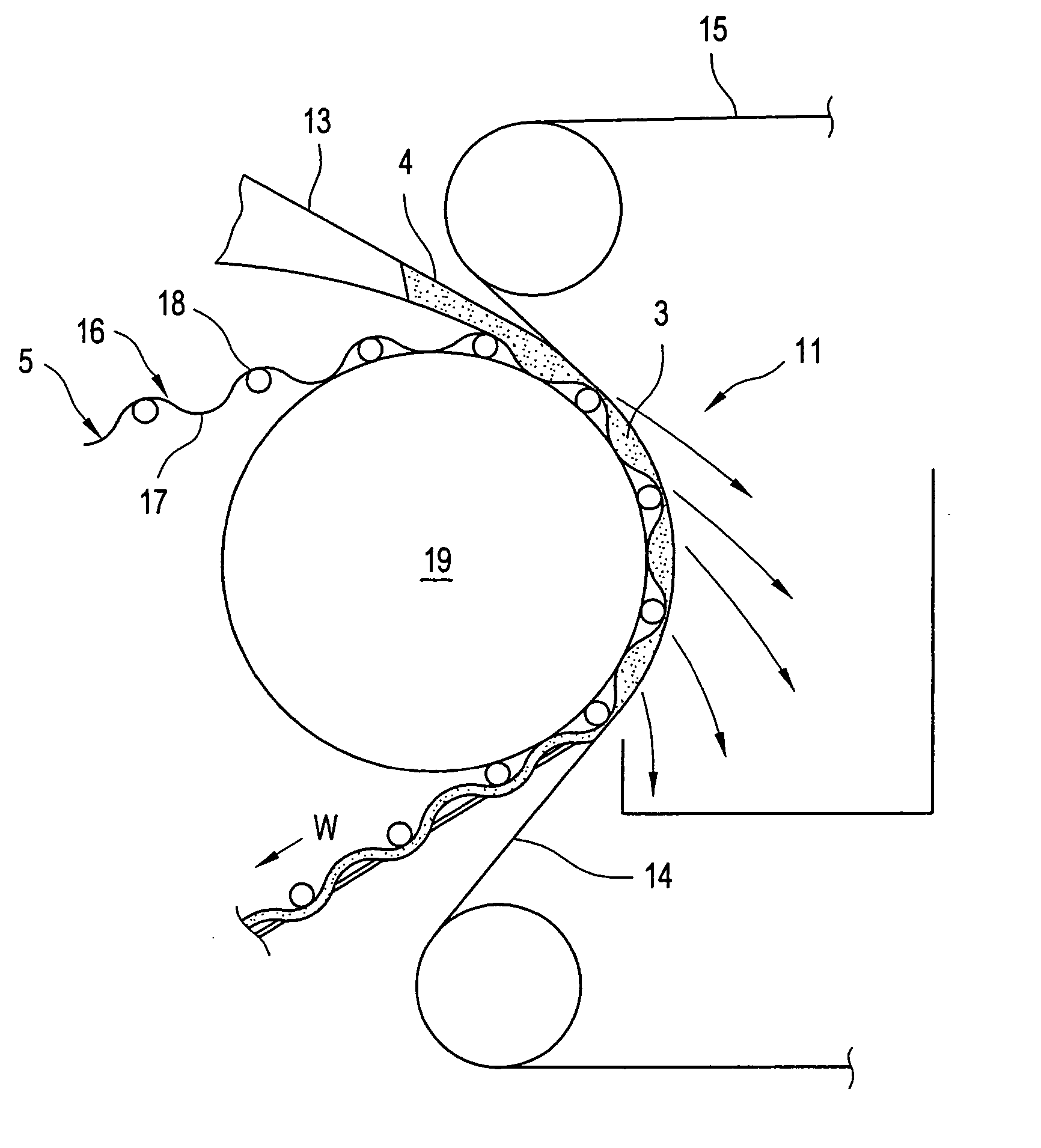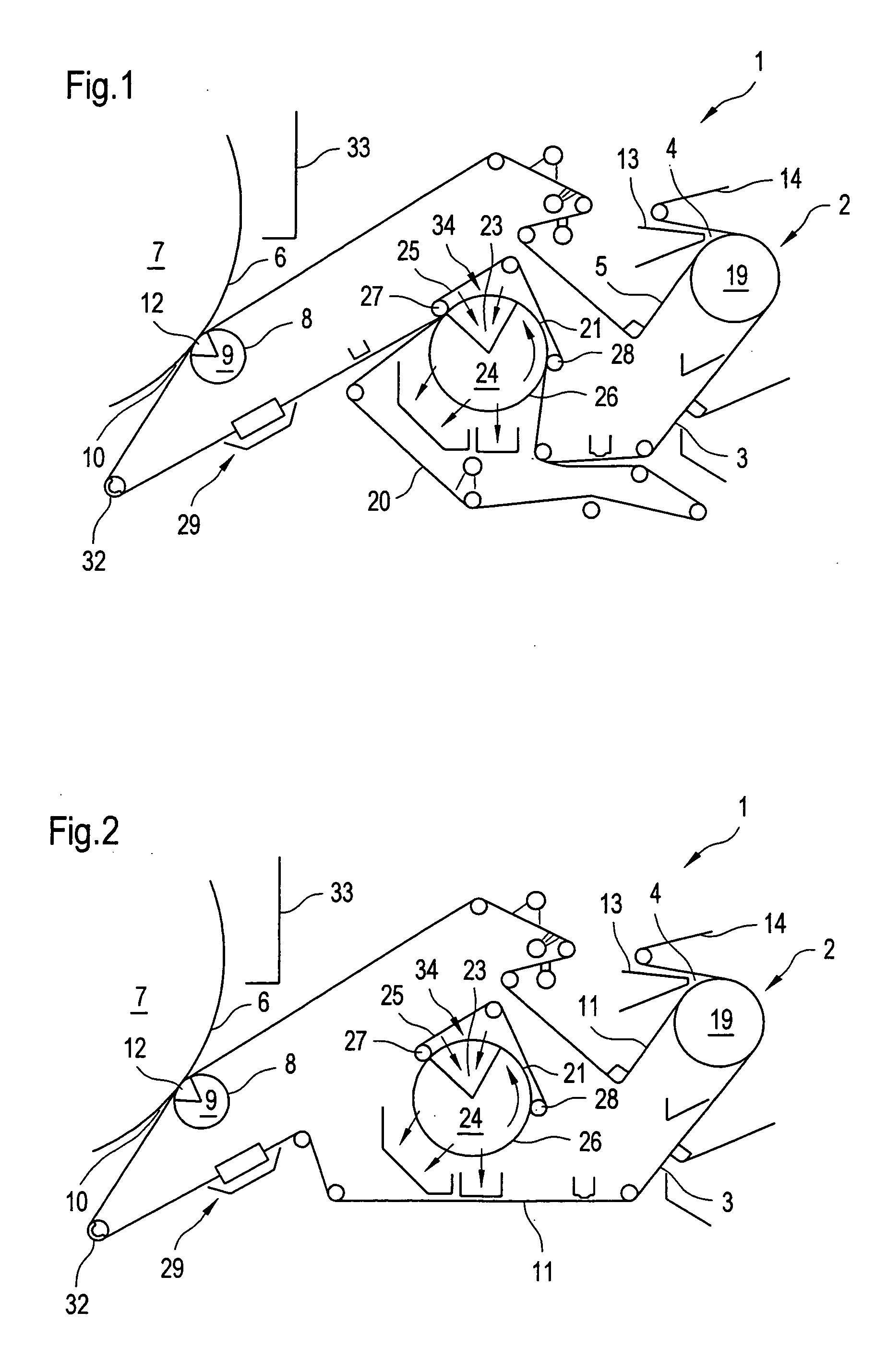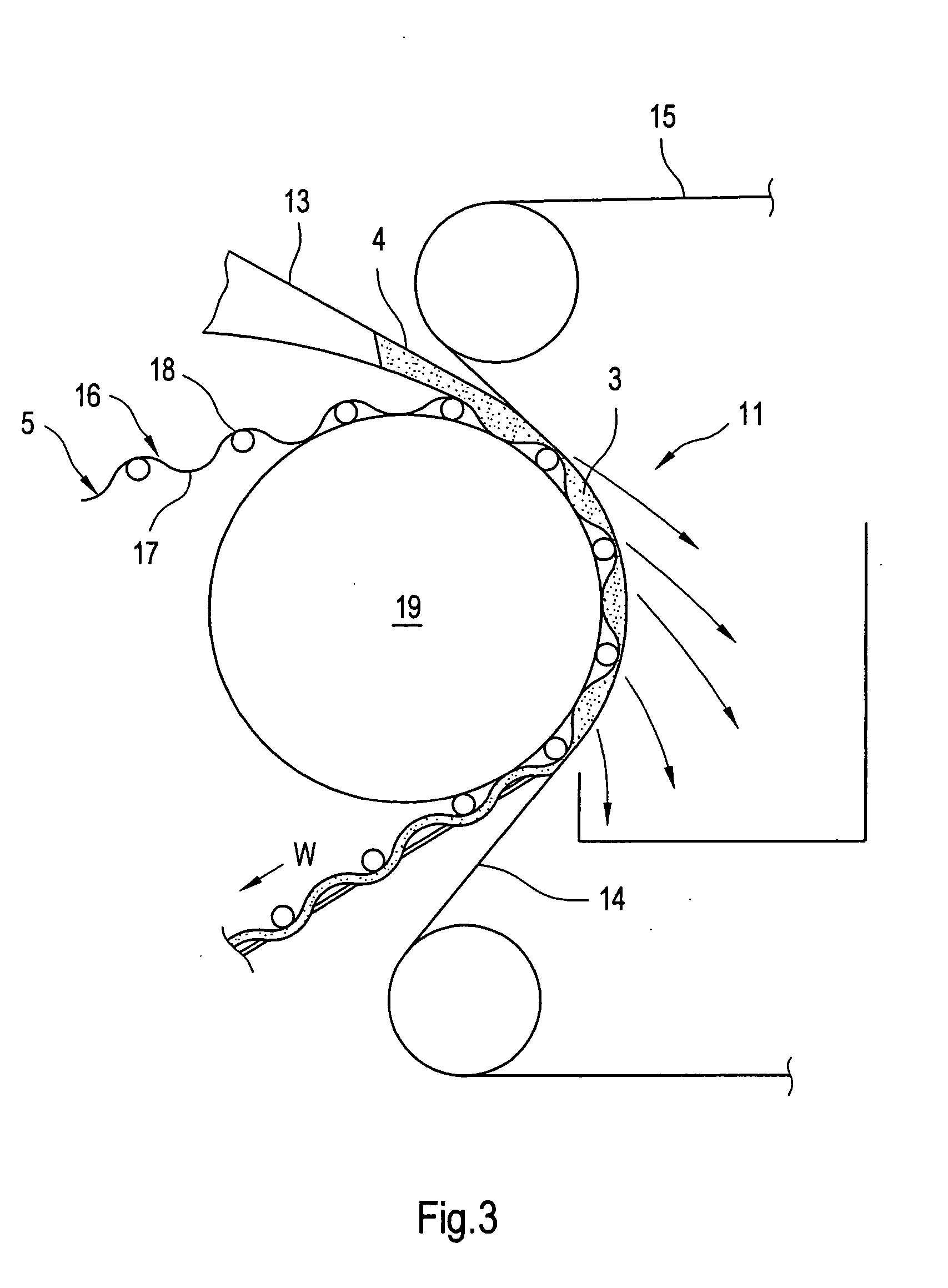Machine for the production of tissue paper
a tissue paper and machine technology, applied in the field of paper making machines, can solve the problems of replacing the poor transfer properties of the tissue paper web from the mesh, and the replacement of the expensive shoe press unit, etc., to achieve good dewatering of the tissue paper web, good gas flow, and good dry content and voluminosity of the tissue paper
- Summary
- Abstract
- Description
- Claims
- Application Information
AI Technical Summary
Benefits of technology
Problems solved by technology
Method used
Image
Examples
Embodiment Construction
[0058] Referring now to the drawings, and more particularly to FIG. 1 there is shown a tissue paper machine 1 with a forming section 2 in which a tissue paper web 3 is formed from a pulp suspension 4 on a skin 5 (or 11 of FIG. 2) and with a nip 10 that is formed between cylindrical surface 6 of a Yankee drying cylinder 7 and cylindrical surface 8 of a press roller 9 and through which tissue paper web 3 can be conveyed together with skin 5 or 11. According to the present invention the configuration of machine 1 is variable, such that depending on the quality of tissue paper 3 to be produced, for example its absorbency or tear resistance, either a structured mesh 5 or a felt 11 (this configuration is shown in FIG. 2) is used. Press roller 9 includes a suction zone 12 and bores 30 communicating with suction zone 12 which are provided in the cylindrical surface 8 of the press roller 9.
[0059] In the configurations presented in the FIGS. 1 and 2 structured mesh 5 is used for the producti...
PUM
 Login to View More
Login to View More Abstract
Description
Claims
Application Information
 Login to View More
Login to View More - R&D
- Intellectual Property
- Life Sciences
- Materials
- Tech Scout
- Unparalleled Data Quality
- Higher Quality Content
- 60% Fewer Hallucinations
Browse by: Latest US Patents, China's latest patents, Technical Efficacy Thesaurus, Application Domain, Technology Topic, Popular Technical Reports.
© 2025 PatSnap. All rights reserved.Legal|Privacy policy|Modern Slavery Act Transparency Statement|Sitemap|About US| Contact US: help@patsnap.com



